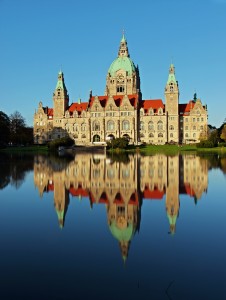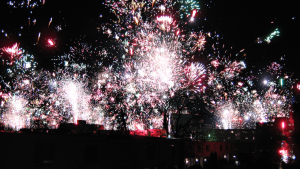After discovering this wonderful way of turning inexpensive digital cameras into exquisite photographic instruments of many times the price, I have continued to develop my use of CHDK, and CHDK has continued to develop itself, with the releases of versions 1.2 and 1.3. This means that I have been back to their wiki every now and then to make some improvements to the writing (although never as much as I hoped I could do), and, occasionally, discovering something new.
This trip will feature time lapses as a major project. I have detailed the problems of getting long time lapse sequences to stay focussed throughout the whole sequence. This done, there remained the question of initialising the camera for the time lapse shoot. Unfortunately some of the kayaking sequences shot last autumn turned out to be of limited use because either the camera had been accidentally turned off, or the settings were not suitable for the shoot (e.g. ISO set too high).
With CHDK it is possible to simulate button presses in code, such as those of an initiating sequence, as long as it is done slowly enough (e.g. with about ¼ second between presses). The exact sequence is camera model-dependent, so care has to be taken to isolate the code sections and paste them into the intervalometer script at the last moment, but this also means that they can be tested relatively easily without having to go through the entire program. Finally, all CHDK menu items can be addressed and modified by the scripts themselves using the set_config_value function, something so extraordinarily powerful I was surprised I had missed it before.
Taking just one script, the intervalometer, which I had previously modified by making it run at set times, and/or switch on or off depending on a light threshold, I was able to add further functionality to cover most of the tasks that will be attempted during the Kiwi V mission:
- Switching into the continuous mode is now performed by the script itself, if continuous shooting is required and the camera is not in the required state. Continuous shooting now takes place in two flavours:
- Fixed shutter speed, with no remetering, producing a very smooth time lapse, but not really suitable for dynamically exposed sequences where remetering would make sense every now and then. New Year’s Eve 2015 is an example of this; and
- Variable exposure where the scene is remetered every n seconds. This produces a small gap of about 1-1.5 seconds during remetering. For sky and landscape sequences (clouds, sunsets, beaches) this requires generating a “lost” frame every now and then and I am still working on how to do this. But that is only a question of time.
- Switching into the timer mode for bracketing sequences (if the camera is not already in the required mode) and setting the bracketing exposure step. Setting the intervalometer to take just one shot takes a bracket with the values that were previously set in the Canon custom timer mode. Unfortunately these values still have to be set by hand, but once set they can be used for a whole series of brackets;
- If the intervalometer is set up for bracketing sequences, it can take multiple brackets at fixed intervals, either as a time lapse bracket, or a fixed number of brackets to form a superbracket; and
- Infinite focus can be set as an override in the CHDK menu when chosen.

Superbracketing: Multiple brackets are separated into exposure levels, and each exposure level is processed for their median pixels. These median images are merged with enfuse to complete the bracket. Why extract the median pixels? This eliminates both sensor noise and movement in the scene itself, and was used in this shot of the New Town Hall in Hannover to reduce the movement of the water in the pond due to wind and ducks swimming, etc., thus improving the reflection (not perfect, but much better than the view on the day).

Once you’re through with the maximum-pixel method (star trailing) and the median-pixel method (superbracketing), there’s also the minimum-pixel method. What on earth could that be good for? Well, I will shoot a couple of my favourite scenes at the thermal areas as time lapses this time round. Should be fun. And with the complete sequences, the minimum pixels will produce images with minimal steam. Not sure whether to do some superbrackets as well, let’s see.
